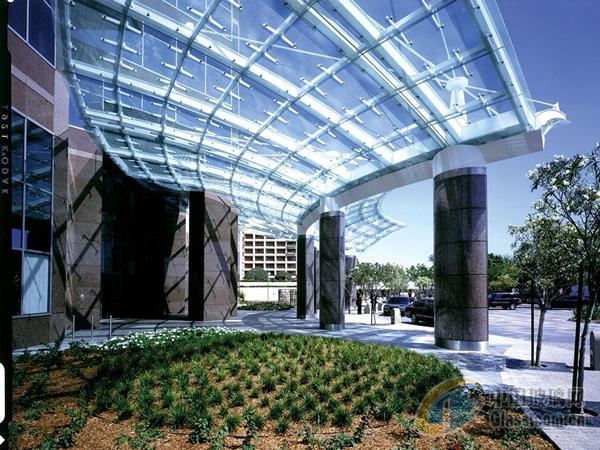Post Time:Jan 18,2017Classify:Industry NewsView:880
Glass canopies are a great way to make any outdoor area or lobby entrance stand out.

We’ve discussed glass as a structural component when it comes to adding a vertical creative element to your project, but glass has even more applications to heighten the impression your building can make.
Glass canopies are a great way to make any outdoor area or lobby entrance stand out, while providing virtually transparent protection from the elements.
Glass canopies are a versatile application that use a variety of minimalistic steel backup structures or laminated glass fins to provide support to overhead or underslung sloped structural glazing.
They are a perfect design choice on the front of a building facade, or as a standalone structure to provide cover for places like bus stations or subway entrances as shown by the canopy at the Bowling Green Subway Station in New York City.
Pilkington Planar™ point supported structural glass canopy systems undergo rigorous testing to ensure they will maintain their integrity under heavy wind, seismic, and snow loads.
These canopies can span large expanses from the building as long as the underlying purlins are reinforced with cable tension rod rigging back to the building and are engineered with adequate thicknesses/depths of materials.
Typical modules can be as narrow as a few feet on center to as wide as eight to ten feet, depending on maximum snow drift loading and wind loads.
Required points of support are analyzed on a case by case basis to determine proper thicknesses by Pilkington to ensure stress and deflection are within acceptable code of practice limits.
Pilkington Planar™ requires a minimum of three degrees of slope to eliminate ponding of water in the middle of the laminated glass panels, allowing for very flat canopies.
Additionally, Pilkington Planar™ laminated glass is typically bonded with DuPont SentryGlasⓇ (formerly DuPont SentryGlasⓇ Plus) ionoplast interlayer that is warrantied for exposed edge stability (as the interlayer is water-resistant) to provide even more design flexibility for the architect.
This interlayer is also much stiffer than PVB, which allows for the two lites of glass to act as a composite piece of glass, keeping the glass make-ups as thin and economical as possible.
Before the glass panels are laminated, they can also be silk-screened or digitally-printed with ceramic frit paint to accommodate any design. These patterns help conceal dirt and bird droppings until cleaning can occur, while allowing for architectural expression and shading of occupants from direct sun.
One important consideration for ceramic fritting of canopy glass is the effect of the frit as related to heat build up in the interlayer. Be sure to have the glass system manufacturer check the pattern and color of the frit as it can be very different dependent on glass tint (color) and project location (historic maximum temperatures) to make sure there is no issue with discoloration of the interlayer due to extreme heat.
Horizontal ceramic fritted surfaces can get twice as hot as the surrounding temperature due to reflectance/absorption and angle to the sun in different locations!
The wide range of fully customizable design options available for glass canopy applications combined with the technical know-how of Pilkington/W&W is what allows canopy structures like the Twelve Oaks Mall in Michigan to create a truly iconic entrance.
Every component of each Pilkington Planar™ glass canopy system is manufactured, designed and tested by Pilkington, from the laminated glass, to the hardware, and even the backup structure in many cases.
This sole source package ensures the highest quality engineered glass canopy available. No matter what design you want to implement, Pilkington Planar™ can provide the means to make it a reality, from start to finish.
Check out some of the more intriguing Pilkington Planar™ designs W&W Glass/Pilkington Planar have engineered like the lobby entrance to 222 Broadway in New York City, which uses vertical, laminated low-iron glass fins connected directly to low-iron laminated glass outriggers to support an underslung canopy.
Source: www.wwglass.comAuthor: shangyi